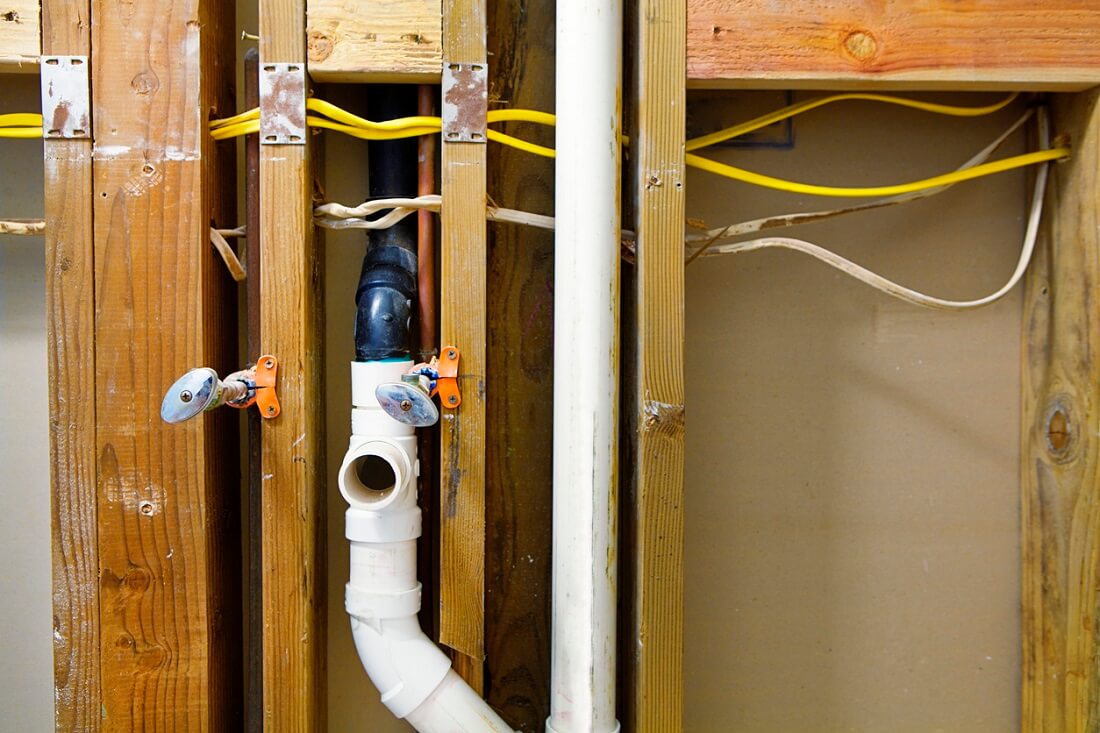When envisioning your finished basement, scenes of lively gatherings and well-needed leisure time likely spring to mind. Admittedly not the most glamorous aspect of a finished basement, plumbing rough-ins are crucial to the function of your basement's plumbing.
These concealed networks of pipes lay the groundwork for your basement's future functionality, whether you dream of a bathroom oasis, a cozy laundry area, or a sleek wet bar. Understanding their significance and planning accordingly can save you time, money, and headaches down the road. Let's explore what basement plumbing rough-ins entail, why they are indispensable, and how to optimize them for your basement renovation project.
Understanding Basement Plumbing Rough-Ins
Basement plumbing rough-ins involve installing the initial plumbing lines before walls, floors, and ceilings are finished. Here's a brief overview of the main components:
Water Supply Lines: These pipes deliver water to your basement fixtures, such as sinks, toilets, showers, and appliances. They are typically made of materials like copper, PEX, or CPVC, ensuring efficient water flow and accessibility.
Drainage Pipes: These PVC pipes are responsible for carrying wastewater away, and they are designed to slope downward to facilitate proper drainage.
Ventilation Pipes: Vital for preventing airlock and allowing sewer gases to escape, these pipes extend from your drainage system and exit through the roof, ensuring proper airflow.
Why Basement Plumbing Rough-Ins Matter
1. Future-Proofing Your Basement: Even if you're not immediately planning a basement kitchen or bathroom, installing rough-ins now saves the hassle of disrupting finished walls later on. It's an investment in the future functionality of your space.
2. Meeting Building Codes: Building regulations dictate specific plumbing standards for safety and sanitation. Proper rough-ins ensure your basement complies with these codes, which are essential for current and future home sales.
3. Enhanced Functionality: With plumbing rough-ins in place, you have the freedom to utilize your basement fully. Whether adding a guest bathroom, a laundry room, or a bar area, the possibilities are open when the infrastructure is set.
Tips for Optimizing Basement Plumbing Rough-Ins
Strategic Planning: Before pipes are installed, meticulously plan your basement layout. Consider fixture placements, optimal pipe routes, and potential obstacles.
Accessible Maintenance: Ensure there are accessible points or crawl spaces to reach the plumbing for repairs or maintenance. These access points should be strategically located and easily reachable.
Invest in Quality: High-quality pipes, fittings, and fixtures are essential for longevity and minimizing the risk of leaks or issues.
Water Efficiency Consideration: Opt for low-flow fixtures to save water and reduce utility bills. This environmentally friendly choice also pays off in long-term savings.
Seek Expert Advice: When in doubt about layout or design, consult with a professional plumber or basement renovation expert. Their expertise can help avoid costly mistakes and ensure an optimal plumbing system.
In conclusion, basement plumbing rough-ins are the backbone of a functional and efficient basement space. By planning ahead, using quality materials, and following best practices, you can create a plumbing system that not only meets your current needs but also sets the stage for future enhancements. Whether it's a welcoming basement bathroom or a versatile entertainment hub, proper rough-ins ensure your basement is ready to fulfil your vision.
Contact McKenna Plumbing today!
If you are looking to renovate your basement and need expertly serviced plumbing rough-ins for your Oakville home, the team at McKenna Plumbing is here to help. Talk to us today for any of your basement renovation plumbing needs!

